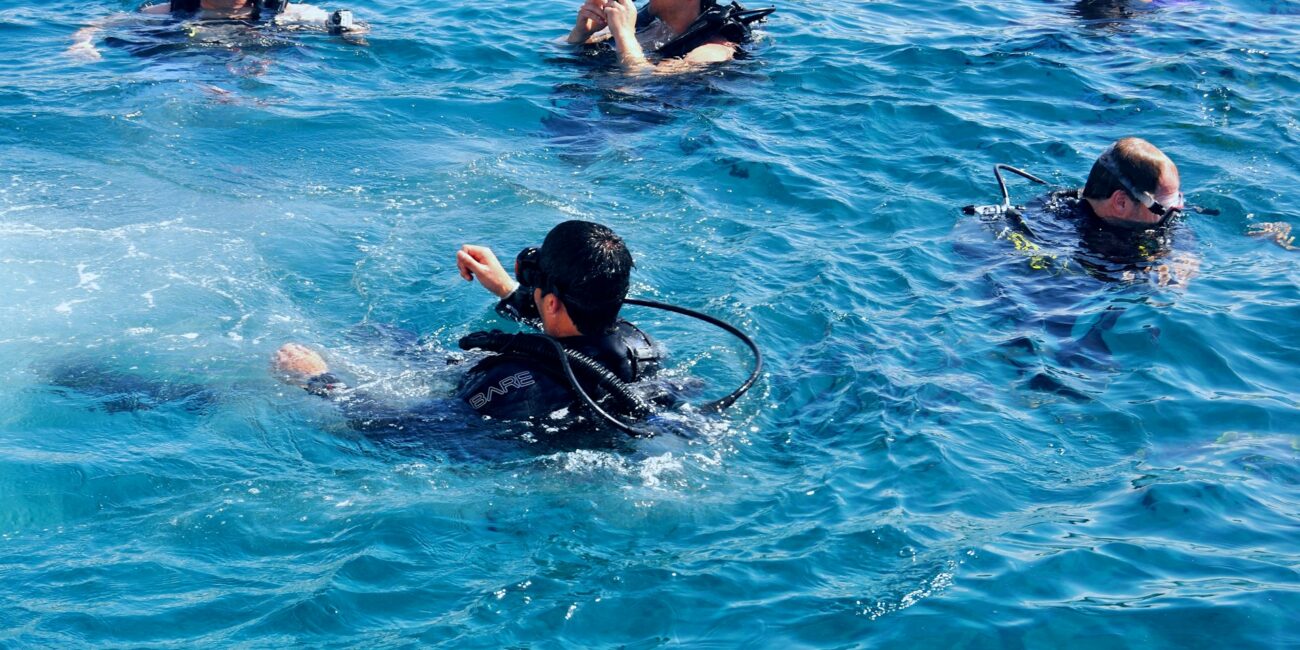The world beneath the waves is a vast frontier waiting to be harnessed. With growing interest in offshore resources and the expansion of global communication networks, deep-sea infrastructure development has become more crucial than ever.
Yet, the challenges that come with constructing and maintaining these underwater marvels can pose significant hurdles. For professionals and stakeholders in the field, understanding these obstacles and the innovative solutions available is key to success.
This blog post will explore the major challenges in deep-sea infrastructure development, providing insights into the strategies and construction solutions designed to overcome them.
Understanding Deep-Sea Infrastructure
What is Deep-Sea Infrastructure?
Deep-sea infrastructure encompasses a range of structures built on or under the ocean floor. These include oil and gas platforms, subsea pipelines, telecommunication cables, and offshore wind farms.
Such projects are critical for energy generation, resource extraction, and global connectivity. The construction of these infrastructures requires specialized strategies to withstand harsh oceanic conditions.
Unlike land-based construction, these projects must account for factors such as water pressure, salinity, and marine life, which can significantly impact both construction and functionality.
Importance of Deep-Sea Projects
Deep-sea projects hold immense significance for the modern world. They contribute to the energy supply chain, facilitate international communication, and support scientific research.
By harnessing resources from beneath the ocean, these projects not only fulfill current needs but also pave the way for future advancements.
In addition, deep-sea infrastructure plays a pivotal role in achieving sustainability goals. Offshore wind farms, for instance, are contributing significantly to the shift towards renewable energy, reducing reliance on fossil fuels. Thus, investing in deep-sea infrastructure is essential for sustainable economic growth.
Key Players in Development
Central States Underwater is an example of a leading firm specializing in deep-sea infrastructure development. With cutting-edge technology and a team of skilled engineers, they are at the forefront of tackling the unique challenges posed by underwater construction.
The involvement of such expert organizations ensures that the infrastructure projects are executed with precision and efficiency. Their experience and expertise allow them to implement solutions that are tailored to specific project requirements, ensuring the longevity and reliability of the structures.
Challenges in Deep-Sea Construction
Harsh Oceanic Conditions
One of the primary challenges in deep-sea construction is the harshness of oceanic conditions. The intense water pressure at great depths can exert immense force on structures, necessitating robust engineering designs. Furthermore, the corrosive nature of saltwater requires materials that can resist degradation over time.
Engineers must also contend with unpredictable weather conditions, including storms and high waves, which can disrupt construction and maintenance activities. To mitigate these risks, careful planning and real-time monitoring systems are employed to ensure the safety and stability of the infrastructure.
Environmental Concerns
Environmental considerations are paramount in deep-sea construction. The delicate marine ecosystem is susceptible to disturbances caused by construction activities.
Potential impacts on marine life, habitat disruption, and pollution must be addressed through rigorous environmental assessments and sustainable practices.
To minimize the environmental footprint, developers implement measures such as noise reduction, controlled sediment displacement, and the use of eco-friendly materials. Collaboration with environmental organizations and adherence to regulatory guidelines are crucial in ensuring responsible development.
Technical Limitations
Technical limitations present another significant challenge. The remote and inaccessible nature of deep-sea sites can hinder project execution. Specialized equipment and technology are required for underwater operations, and any malfunction can lead to costly delays.
Advancements in technology, such as remotely operated vehicles (ROVs) and autonomous underwater vehicles (AUVs), have revolutionized access to these sites. These tools allow engineers to perform detailed inspections and maintenance without the need for human divers, improving safety and efficiency.
Engineering Strategies for Success
Innovative Construction Techniques
Innovative construction techniques are essential for overcoming deep-sea challenges. Prefabrication, for instance, allows for the assembly of components onshore before transporting them to the site.
This reduces the time spent on-site and minimizes the impact of adverse weather conditions. Another strategy is the use of modular construction, where structures are built in sections and connected underwater. This approach simplifies logistics and enables scalability, allowing for easier expansion or modification of the infrastructure in the future.
Material Advancements
Material selection is critical in deep-sea construction. Advanced materials, such as high-strength composites and corrosion-resistant alloys, are used to withstand the harsh underwater environment. These materials offer durability and longevity while reducing maintenance costs.
In addition, researchers are exploring self-healing materials that can repair minor damages autonomously, further extending the lifespan of the infrastructure. Such innovations are paving the way for more resilient and cost-effective deep-sea projects.
Safety Protocols and Monitoring
Ensuring safety is paramount in deep-sea construction. Comprehensive safety protocols are established to protect workers and equipment during the project lifecycle. Regular training, emergency response plans, and strict adherence to safety standards are essential components.
Real-time monitoring systems provide valuable data on structural integrity, environmental conditions, and potential hazards. This information allows for proactive maintenance and timely intervention, enhancing operational reliability and minimizing risks.
Construction Solutions for Deep-Sea Projects
Customized Designs
Customized designs are a hallmark of successful deep-sea projects. Engineers tailor designs to suit the specific conditions and requirements of each site. Factors such as water depth, seismic activity, and seabed composition influence the design process.
By leveraging advanced computational modeling and simulation tools, engineers can optimize designs for maximum performance and cost efficiency. This approach ensures that the infrastructure can withstand the unique challenges posed by the underwater environment.
Collaboration and Expertise
Collaboration among multidisciplinary teams is crucial in deep-sea construction. Engineers, marine biologists, and environmental scientists work together to address the complex interplay of technical and ecological factors. Their collective expertise ensures that projects are executed with precision and adherence to best practices.
Engaging stakeholders, including local communities and regulatory bodies, fosters transparency and trust. By considering diverse perspectives and concerns, developers can create solutions that balance economic growth with environmental stewardship.
Sustainable Practices
Sustainability is a core principle in modern deep-sea construction. Developers prioritize eco-friendly practices, such as using renewable energy sources and minimizing waste generation.
Initiatives like habitat restoration and marine conservation further contribute to environmental preservation. By adopting sustainable practices, deep-sea projects align with global efforts to combat climate change and protect biodiversity. This commitment to sustainability enhances the reputation and credibility of developers, attracting more investment and support.
Future of Deep-Sea Infrastructure
Emerging Technologies
The future of deep-sea infrastructure is bright, with emerging technologies poised to revolutionize the industry. Innovations such as underwater drones, artificial intelligence, and blockchain are enhancing efficiency and transparency in project management.
These technologies enable real-time data collection and analysis, facilitating informed decision-making and predictive maintenance. By harnessing the power of data, developers can optimize operations and reduce costs, ensuring the long-term success of deep-sea projects.
Expanding Applications
The applications of deep-sea infrastructure are expanding beyond traditional industries. Renewable energy generation, marine research, and underwater tourism are areas of growing interest.
These sectors offer new opportunities for economic development and technological advancement. Collaboration between industries and academia is fostering innovation and knowledge exchange. By exploring new frontiers, deep-sea infrastructure is set to play a pivotal role in shaping the future of sustainable development.
Investment and Growth
Investment in deep-sea infrastructure is projected to increase significantly in the coming years. Governments, private enterprises, and international organizations recognize the potential of these projects to drive economic growth and global connectivity.
With increased funding, developers can undertake more ambitious projects and continue to push the boundaries of engineering and innovation. This trend is expected to accelerate the pace of development and solidify the position of deep-sea infrastructure as a key driver of progress.
Conclusion
In conclusion, the challenges of deep-sea infrastructure development are multifaceted, requiring innovative solutions and collaborative efforts.
By understanding the complexities of oceanic conditions and implementing advanced engineering strategies, developers can overcome obstacles and achieve success.
The future of deep-sea infrastructure is promising, with emerging technologies and expanding applications offering growth opportunities. Industry leaders are at the forefront of this transformation, paving the way for a sustainable and interconnected world.
For stakeholders and professionals in the field, staying informed and engaged is essential. By leveraging industry insights and best practices, you can contribute to the continued advancement of deep-sea infrastructure and unlock its vast potential.






